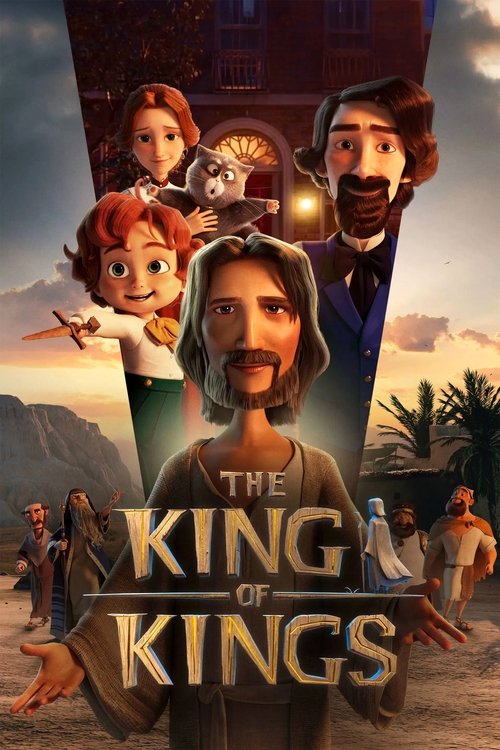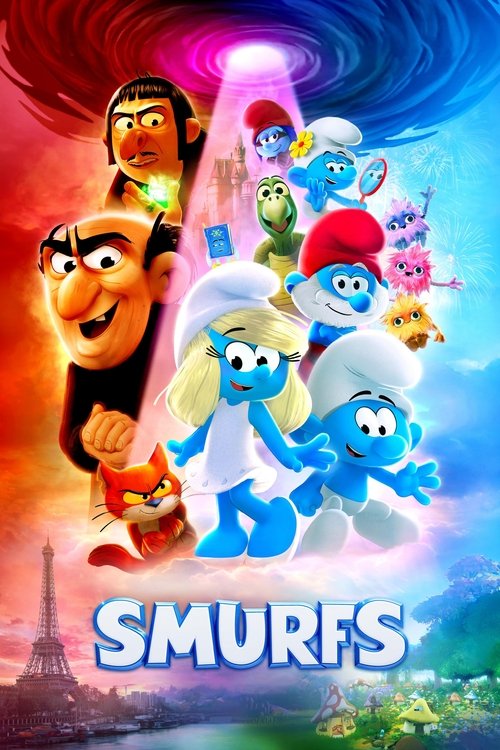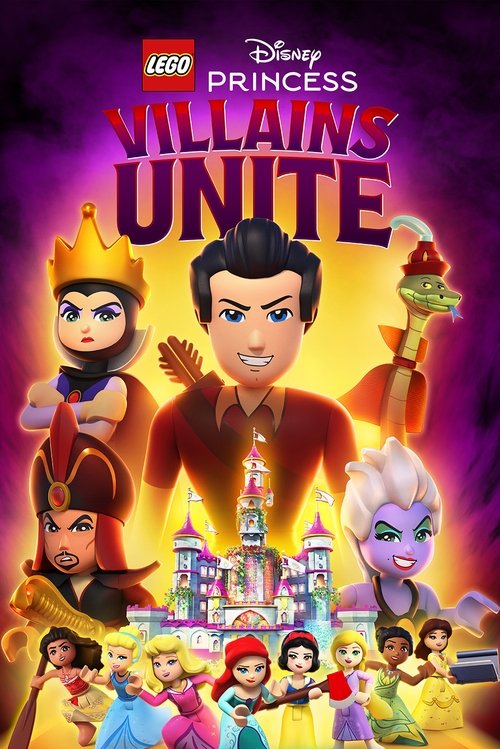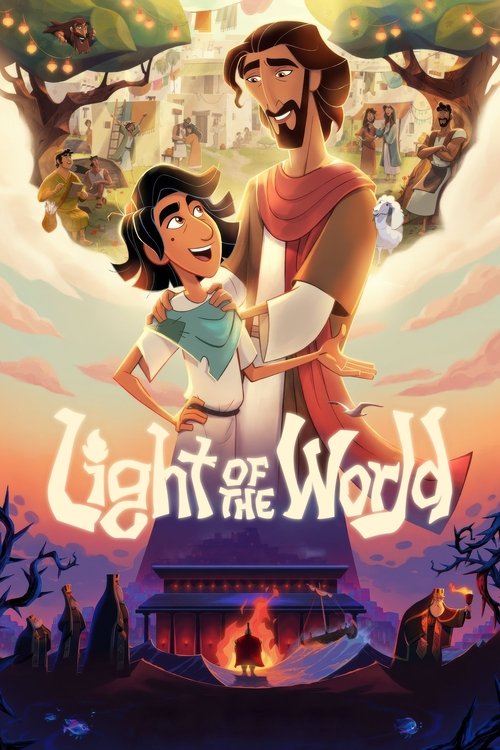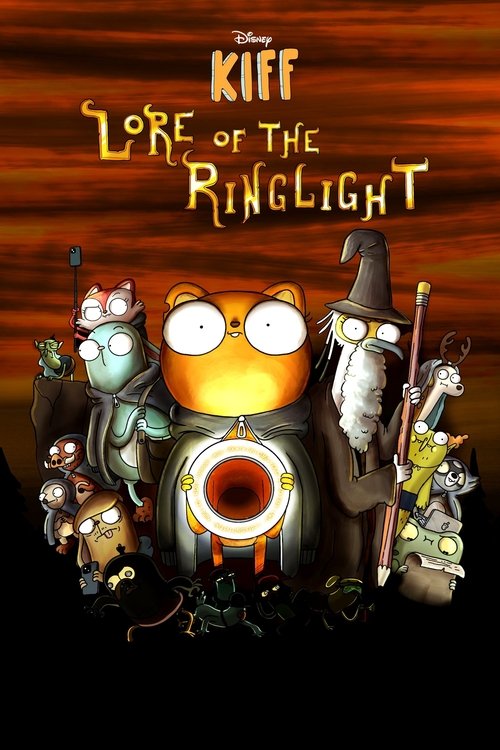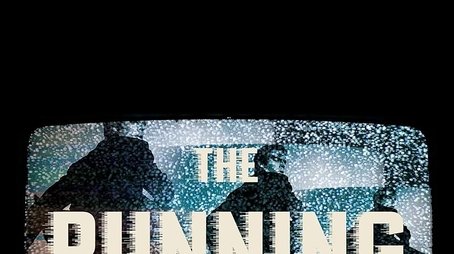
Ask Your Own Question
What is the plot?
A packed London theatre opens the film. Charles Dickens moves through his one-man performance of A Christmas Carol, but he cannot sustain control over the house. His youngest son, five-year-old Walter, slips away from his seat with the family cat Willa perched on his shoulder and bounds onto the stage. Walter, wide-eyed and full of fantasy, strides before the audience and adopts the posture of a knight, pretending to be King Arthur and demanding attention. Laughter rises from the crowd; Charles tries to pull his son back, but Walter delights in the interruption. Backstage, the boy and Willa tumble through Charles's papers, scattering the manuscript that Charles keeps for his readings. Charles snatches the pages, scolds Walter sharply, and the boy retreats, upset, while the cat rubs against the torn script.
Later, in the Dickens family's sitting room, Catherine Dickens urges her husband to find a gentler way to calm their son's restless imagination. She suggests he tell Walter a story about a different kind of king, one who does not wear crowns of steel. Charles, admitting that he has an untold account at hand, unwinds by the fire with Walter perched on his knee and Willa tucked nearby. He promises a tale without dragons but with angels and tyrants, and begins to recount what he calls the story of the "king of kings."
As Charles speaks, the narrative transitions into Walter's imagination. He sees a dark night in Bethlehem: a woman named Mary gives birth in a lowly stable while Joseph watches, anxious and protective. An angel appears to shepherds in the fields, their startled faces lit by a pale glow. Visitors from distant lands, the three wise men, arrive bearing gold, frankincense, and myrrh; they bow before the newborn. Word of this infant who is called a king reaches King Herod, who convenes his court in panic and jealousy. Herod orders soldiers to seek out every newborn boy in the region to eliminate the threat he believes the child poses. Armed men move through the streets and houses of Bethlehem, forcing entry, taking infants from their parents, and slaying them at Herod's command. Mary and Joseph, warned by an angel, flee by night with the baby; they cross the border into Egypt to escape the soldiers sent to kill the children.
Time in Walter's vision accelerates. Jesus, the boy of the stable, grows into a man who walks across Galilean roads. He seeks out the river Jordan and stands before John the Baptist, who dips him into the water and baptizes him. As the crowd watches, the heavens open; after this, Jesus begins to gather followers. He approaches fishermen and tax collectors and names them as his disciples: Peter, known for his impulsive faith; John; Matthew; Philip; Thomas; Simon; Bartholomew; James; Thaddeus; Andrew; and Judas Iscariot. Walter, imagining himself and Willa at Jesus's side, follows the group as they travel from town to town.
Jesus performs acts that draw both wonder and suspicion. At a wedding in Cana, he turns water into wine, and the guests taste the first of these wonders. In markets and streets, he reaches out and touches people crushed by illness; he touches a blind man, and the man's sight returns. A friend named Lazarus dies and is laid in a tomb; three days after the burial, Jesus stands at the entrance and calls Lazarus forth, and Lazarus walks out of the tomb alive, shaken but breathing. The crowd gasps at the voice and the sight of life returned.
On a dusty road, a frantic family brings a man wracked by a demonic voice to Jesus. The man screams and thrashes, and the air seems to thicken with dread. Jesus speaks into the darkness and commands the spirit to leave. The entity, described as a demonic presence, is expelled and rushes into a herd of pigs nearby. The animals, seized as if by a single panic, stampede toward a cliff and plunge into the sea, their bodies striking the rocks and sinking. Witnesses scatter at the roar of the herd falling from the heights.
At other moments, Jesus draws his followers close and speaks of the Kingdom of God. He walks along the shore with them and, when a sudden storm whips the sea into whitecaps, he stands and commands the wind and waves to be still; the waters flatten under his word. Later, under a raw sky, Peter steps from the boat and, encouraged by Jesus, begins to walk on the water toward him. The disciples watch in astonishment until Peter sees the wind and the height of the waves, doubts, and starts to sink. He cries out, and Jesus reaches down, grasps him by the hand, and pulls him back into the safety of the boat.
Temptation comes as well. In the solitude of a wilderness, a figure identified as Satan confronts Jesus, offering power and ease in exchange for the surrender of his will. Jesus refuses each lure, and the tempter departs. When Jesus returns to Jerusalem, he moves through the temple and finds the courtyards filled with merchants and moneychangers trading coins and selling doves. Anger flares across his face; he overturns tables, scatters coins, drives sellers from the temple, and denounces the commerce taking place in the house of worship. Priests and elders recoil. The High Priest Caiaphas begins to plot with other leaders to neutralize the threat Jesus presents to their authority.
The disciples' journey contains a warning: in private, Jesus tells them that one among them will betray him. He shares bread and wine at a final meal with them, and his words weigh on the table. Judas, who has already spoken with the chief priests and agreed to reveal Jesus's whereabouts for a sum of silver, moves through the crowd later that night to hand the authorities the man they sought. Under the olive trees of Gethsemane, soldiers seize Jesus after a kiss from Judas. The disciples scatter; Peter lurches forward and slashes at a solders' ear, but Jesus rebukes him and heals the wound.
The captors haul Jesus before the Jewish council where Caiaphas accuses him of blasphemy. Guards take him to the Roman governor, Pontius Pilate. Pilate questions the man, feeling the pressure of the crowd chanting for condemnation while others murmur in Jesus's defense. Despite Pilate's vacillation and a ceremonial washing of his hands, he bows to the tide of public clamor. Pilate orders that Jesus be scourged, mocked, and delivered to be crucified.
Judas, confronted by his remorse, returns the silver to the priests and hurls the coins onto the temple floor before leaving in anguish. He seeks to undo the act but finds the chain of events has been set into motion. Soldiers press a crown of thorns onto Jesus's head and lead him out to a hill named Golgotha. There they fix him to a wooden cross with nails; they also crucify two criminals at either side, known by the names given to them in the account: one curses him, the other, called Dismas, turns and asks for mercy. Dismas pleads for forgiveness, saying, "Jesus, remember me," and Jesus answers that Dismas will be with him that day in Paradise. The other thief, Gestas, jeers and accuses. Roman soldiers stand at the foot of the crosses, dividing garments among themselves and keeping watch.
As hours pass, the sky darkens. Jesus cries out to God; his voice drops into a whisper and then into silence. The soldiers observe as he draws his last breath and the body goes limp against the grain of the wood. While the narrative does not linger on the technicalities of the execution beyond the scene on the cross, witnesses move nearer and some disperse in grief. The two criminals die on their crosses; Dismas's final moments are of penitence and a sentence of hope from Jesus, Gestas's of mockery and derision. The Roman practice of crucifixion leaves the condemned exposed to death by suffocation, shock, and loss of blood; the crowds witness the culmination of the sentence as the three bodies hang until their ends.
Walter, seated by the hearth listening to Charles's low voice, reacts to the death with an intensity that breaks outward into his imagination. He sees Jesus sink beneath waves in a recalled image of Peter's fall; when Walter feels himself slip under the surface, he thrashes and calls out, and Jesus reaches down and rescues him, dragging him back to the air. But in this vision, Jesus does not reappear on the water. Instead, the man who rescued Walter disappears beneath the surface, and where the figure had been a tall wooden cross stands upright in the surf. Walter washes up on the shore, trembling, and walks inland. He finds himself before the cross, and its shadow presses over him. Deeply moved, he hears Charles's voice explaining a prior tale: the story of Adam and Eve, their disobedience, and how that first transgression tied humanity to a debt that, Charles tells him, Jesus took upon himself. Charles tells the boy plainly that Jesus gave his life out of love for mankind; he frames the crucifixion as an act whose necessity he argues to Walter in clear, unornamented terms, and the child processes these ideas with difficulty.
The story presses on. On the third day after Jesus's burial, the stone sealing his tomb is found rolled away. Mary Magdalene and several disciples approach the sepulcher and see that the linen wrappings lie inside and the place is empty. The scene is quiet; no trumpet of revelation arrives, only the sight of absence. Then, walking beyond the garden and toward a rising sun on the horizon, the resurrected Jesus appears. He stands before Walter in the vision, who watches with a sudden lifting of fear into joy. Jesus looks at the boy without speaking, gives him a small, lingering smile, and begins to walk away. He does not turn back or call out; he walks toward the light of dawn and disappears from view, his silhouette swallowed by the horizon.
Charles closes his tale. Walter, electrified and sobbing, stands and races through the house to wake his brothers and sisters, pressing their sleeping faces, calling them to come and hear the story he has just been told. The children rouse and gather, wide-eyed and hushed, as Walter recounts what he has seen. Catherine and Charles watch the pile of little bodies as they cluster around the hearth. Charles goes to his desk and opens his notebook. He sets pen to paper and begins to write down the life he has just spoken, not for the public stage but for his family: a record he titles "The Life of Our Lord." He writes with steady hand, stopping occasionally to listen to his children's excited whispers.
The film ends with Walter running out into the cool morning light, his imagination still aligned to the images he has carried from the tale, his cat Willa darting along at his heels. Charles folds his manuscript and sits back, listening to the sound of his children's voices as they speak of the king his son has taken into his heart. The camera holds on the family clustered together before fading, and the final image that accompanies the closing credits quotes from the Gospel of John: a sentence announcing a way, a truth, and life, and the exclusivity of the path to the Father through that way.
What is the ending?
Short, Simple Narrative of the Ending
At the end of The King of Kings (2025), the young boy, Walter, who has been living the story of Jesus through the tale told by his father, experiences a deeply personal encounter with Jesus during the crucifixion and resurrection. Jesus speaks words of forgiveness and love directly to Walter, and together, Walter witnesses the empty tomb and the triumphant resurrection. The movie closes leaving Walter--and the audience--deeply moved by the message of redemption, with a powerful song playing over the end credits.
Chronological and Expanded Narrative of the Ending
As the movie approaches its climax, the narrative centers on Walter, Charles Dickens' young son, who has spent the film journeying imaginatively alongside Jesus as his father retells the story of Jesus' life. The tone grows heavy as the scenes shift to Jerusalem during Jesus' final days.
From the Upper Room to the Garden of Gethsemane, Walter watches as Jesus faces the weight of his upcoming sacrifice--he sees the anxiety in Jesus' face as he prays, and the fear of the disciples when Jesus is arrested. Walter follows the crowd as Jesus is taken before Pontius Pilate, listens to the jeering voices, and sees the sorrow of those who love Jesus, like Peter and Mary.
The film then moves to the crucifixion. Walter is present in the crowd, his eyes wide as Jesus is nailed to the cross. The film does not shy away from showing Jesus' pain, but also focuses on his words of forgiveness for the people around him. Here, the film takes a unique turn--Walter is not just an observer. As Jesus is on the cross, he looks directly at Walter as if he is speaking to him, telling him words of love and forgiveness, making the message personal for Walter.
After Jesus dies, darkness covers the land. Walter's face reflects confusion and sorrow as the disciples mourn. The scene shifts to the tomb where Jesus is laid. The film does not rush this moment--it lingers on the stillness and grief.
Early on the morning of the third day, Walter and a companion--perhaps Mary Magdalene in the story, but in Walter's imagination, it could be anyone--approach the tomb. The stone is rolled away. Walter steps inside, finding the tomb empty. The moment is hushed, filled with wonder. The angel appears to announce that Jesus is risen.
The film then brings Walter and Jesus together in a moment of quiet joy--Jesus, resurrected, stands before Walter, who is overwhelmed and unable to speak. Jesus smiles at him, assuring him with a gentle look that he is present and that his sacrifice is for everyone, including Walter.
The last scenes bring Walter back to the present, sitting with his father, who asks him what he learned. Walter is thoughtful, his eyes shining, realizing that the story is not just a tale--but a message meant for him, personally. The camera lingers on Walter's face as the end credits roll, a song about living with faith and love plays, and the film closes with the sense that the story has deeply touched both Walter and the viewer.
Throughout these final scenes, the film makes it clear that the story of Jesus is not just a historical event. It shows how, through the power of imagination and storytelling, a child can feel Jesus' love and forgiveness as if it were meant directly for him. The movie underscores the universality of the message of redemption, emphasizing that it is a story for every generation and every person.
This answer is based on available information for the animated film The King of Kings (2025) directed by Seong-ho Jang and inspired by Charles Dickens' work, not the live-action film referenced in some sources. All descriptions are consistent with this version unless otherwise stated in future confirmations of the film's details.
Is there a post-credit scene?
For the 2025 animated film The King of Kings, there is no reported post-credit scene. However, the movie does feature an original closing credit song titled "Live Like That" performed by Kristin Chenoweth. This song is designed to leave a lasting emotional impact on viewers as they exit the film.
While there are mentions of a "special message" in the end credits on platforms like TikTok, these do not refer to a traditional post-credit scene but rather highlight the emotional and thematic impact of the film's conclusion. The film itself includes impressive animation sequences, such as Jesus walking on water and his temptation, which are enhanced by CGI and 2D animation techniques.
In summary, The King of Kings (2025) does not have a post-credit scene in the conventional sense but concludes with a meaningful song and thematic message.
What are the key biblical events depicted in The King of Kings (2025)?
The film portrays many significant events from Jesus' life, including Joseph and Mary seeking shelter in Bethlehem, the visit of the wise men, King Herod's pursuit of Jesus, Jesus teaching at age 12, John the Baptist's call to repentance, Jesus' baptism, His temptation in the desert, calling of the disciples, numerous healings, the feeding of the 5000, Peter walking on water, raising Lazarus from the dead, the triumphal entry into Jerusalem, Jesus overturning the tables in the Temple, instituting the Last Supper, His agony in the Garden of Gethsemane, trial, crucifixion, burial, and resurrection.
How is the story of Jesus presented in the film The King of Kings (2025)?
The story is framed as a father telling his son the greatest story ever told, which transforms from a bedtime tale into a vivid, life-changing journey. Through the boy's imagination, he walks alongside Jesus, witnessing His miracles, trials, and ultimate sacrifice, allowing viewers to rediscover themes of hope, love, and redemption through a child's perspective.
Who are the main voice actors and characters in The King of Kings (2025)?
The film features an ensemble voice cast including Oscar Isaac as Jesus Christ, Pierce Brosnan as Pontius Pilate, Kenneth Branagh as Charles Dickens, Uma Thurman as Catherine Dickens, Roman Griffin Davis as Walter Dickens, Mark Hamill as King Herod, Ben Kingsley as High Priest Caiaphas, and Forest Whitaker as Peter.
What narrative device is used to connect the biblical story to the present in The King of Kings (2025)?
The film uses the narrative device of Charles Dickens telling the story of Jesus to his son Walter Dickens. This framing story includes Charles explaining complex ideas to Walter and reflecting on his own behavior, which ties the biblical events to a contemporary father-son relationship.
How does the film portray the character development of Charles Dickens in relation to the story he tells?
As Charles tells the story of Jesus to his son, he begins to recognize and feel embarrassment for his own inappropriate outbursts of anger. By the end of the film, he removes a 'Do Not Disturb' sign from his study, symbolizing his desire to spend more time with his children and showing personal growth influenced by the story he shares.
Is this family friendly?
The 2025 animated movie The King of Kings is generally considered family-friendly and suitable for children, particularly those aged 6 and older, though parental guidance is suggested for younger children due to some mild sensitive content.
Potentially objectionable or upsetting scenes for children or sensitive viewers include:
- Mild violence and scary scenes: References to events like the slaughter of innocents and scourging of Jesus, which are presented in a way appropriate for children but could be unsettling.
- Sexual references and nudity: There is a scene where Adam and Eve are shown nude but with genitals covered, and a woman accused of adultery is depicted; Judas also kisses Jesus on the cheek.
- Use of substances: Wine drinking is shown during the Last Supper, reflecting biblical context.
- Mild coarse language: Includes words like "gosh".
Despite these elements, the movie is praised for its warm, reverent, and engaging retelling of the life of Jesus, with beautiful animation, music, and a message emphasizing biblical values such as love, forgiveness, unity, and kindness.
Overall, The King of Kings is recommended as an excellent faith-based film that families can watch together, with the benefit of providing opportunities to discuss real-life moral and ethical themes in an age-appropriate way.
Does the dog die?
In the movie The King of Kings produced in 2025, there is no mention of a dog dying. The film focuses on a father telling his son the story of Jesus Christ, with vivid reenactments of Jesus' life and teachings. Therefore, the question about a dog dying is not relevant to this movie.

